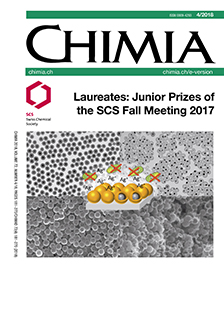Four-electron Reduction and Functionalization of N2 by a Uranium(III) Bridging Nitride
DOI:
https://doi.org/10.2533/chimia.2018.199Keywords:
Dinitrogen, Nitrides, Uranium(iii)Abstract
N2 is a cheap and widely available but very unreactive molecule. Notably, the only industrial process for the conversion of dinitrogen is the Haber-Bosch process to form ammonia, but under very harsh conditions (high temperature and pressure). Here, we review our recent research leading to the reduction of dinitrogen by four electrons, under ambient conditions by a uranium(III) bridging nitride, K3 U-N-U, where two uranium(III) cations are linked by a nitride group and a flexible metal–ligand scaffold. We also show that the bound dinitrogen can be further functionalized under mild conditions: the addition of acid, hydrogen and protons or carbon monoxide to the uranium hydrazido complex yields to the cleavage of the N-N single bond and to the formation of new N–H and N–C bonds.Downloads
Published
2018-04-25
Issue
Section
Scientific Articles
License
Copyright (c) 2018 Swiss Chemical Society

This work is licensed under a Creative Commons Attribution-NonCommercial 4.0 International License.
How to Cite
[1]
Chimia 2018, 72, 199, DOI: 10.2533/chimia.2018.199.







